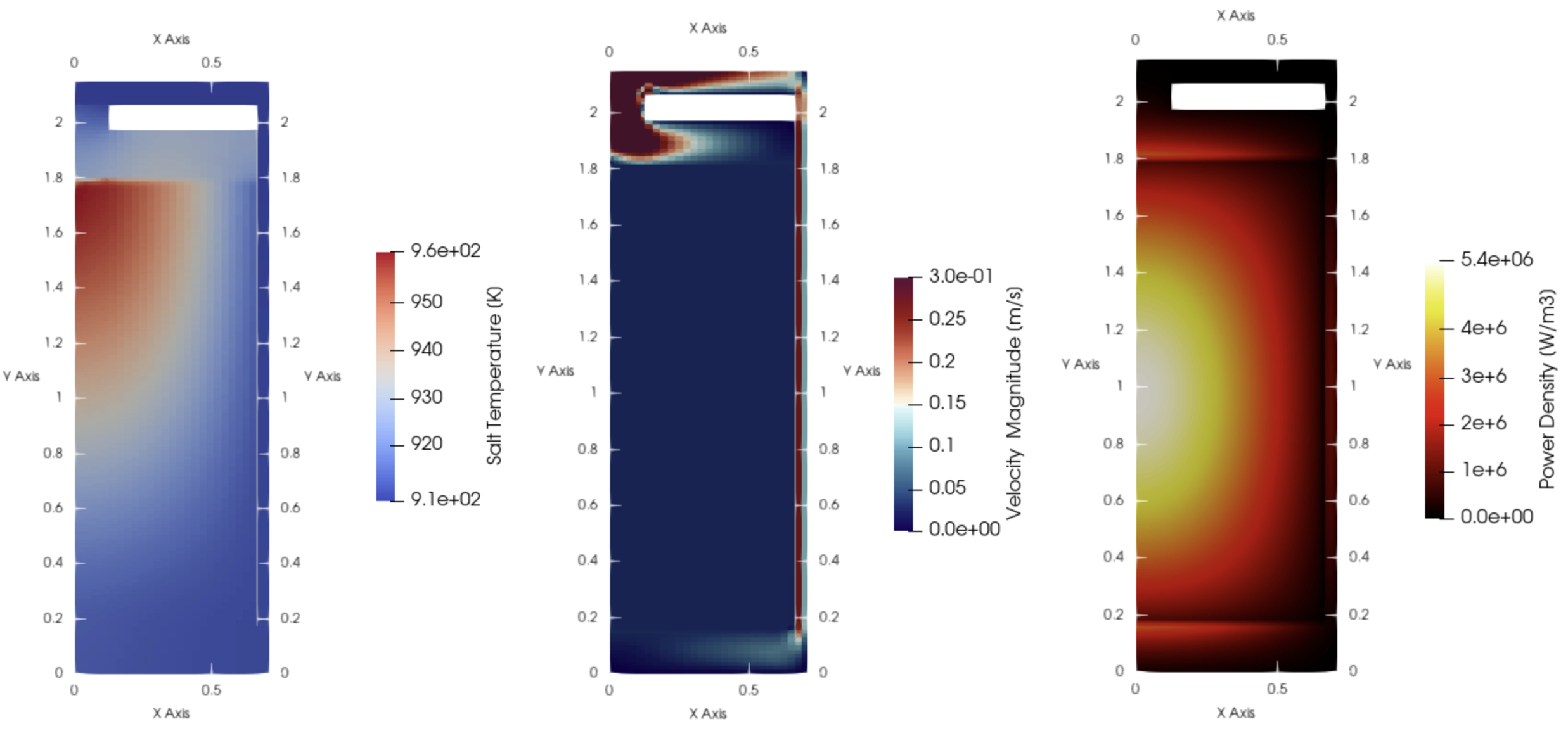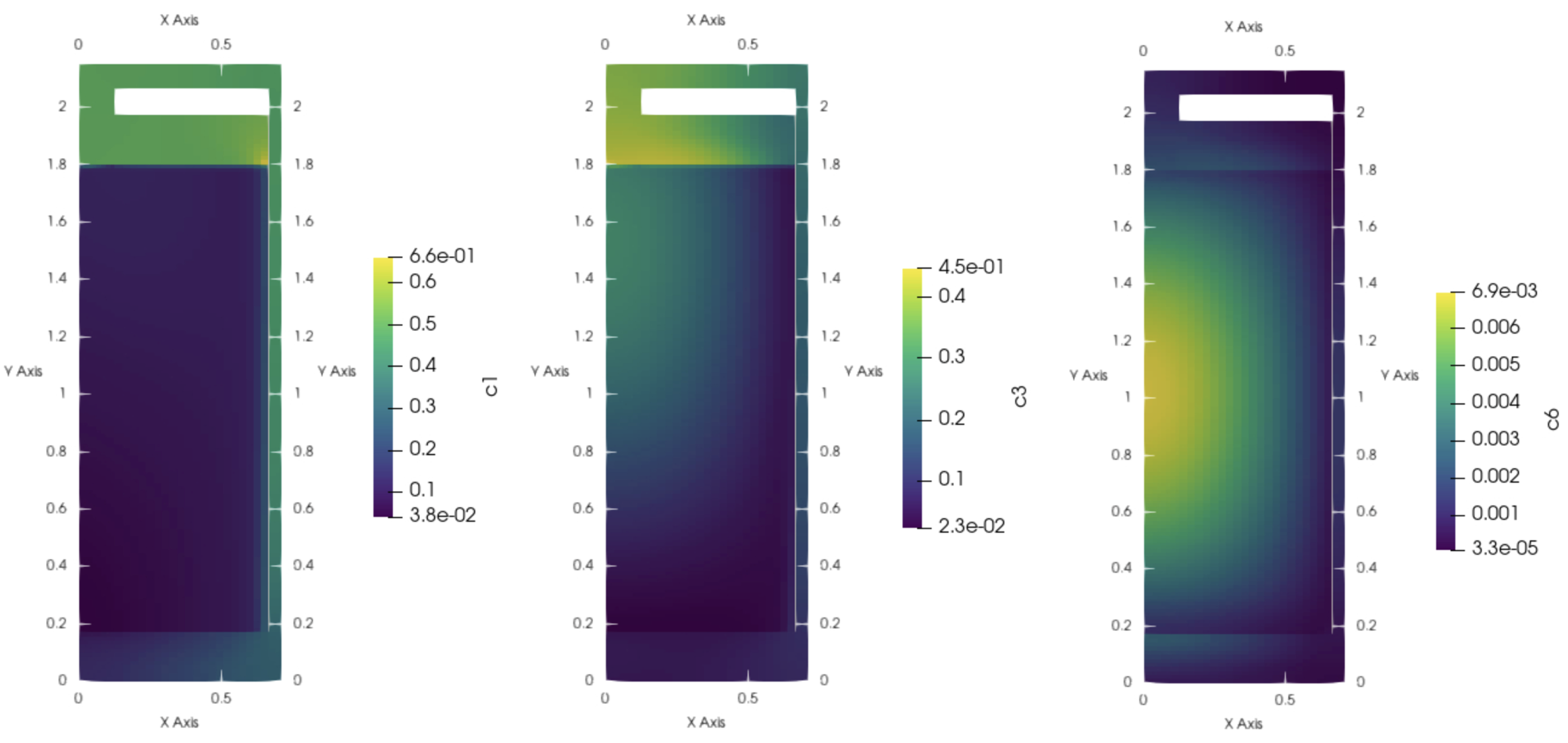Molten Salt Reactor Experiment (MSRE) Multiphysics Model Results
Contact: Mauricio Tano, [email protected]
Model summarized, documented, and uploaded by Andres Fierro, Dr. Samuel Walker, and Dr. Mauricio Tano
This section will cover both the Steady State and Transient Results from the MSRE multiphysics model.
Steady State Results
The multi-dimensional velocity field becomes approximately 1D due to the anisotropic friction coefficient blocking flow in the horizontal direction as seen in Figure 1 (center). Figure 1 (right) and Figure 1 (left) show the power source distribution calculated by Griffin and the resultant temperature field respectively. The simulation predicts a temperature increase of about 60 K (kelvin) in the core. The temperature variation predicted across the downcomer is small.

Figure 1: Fuel Salt Temperature - left (K), Fuel salt velocity - center (m/s), and Power density - right (W/m).
Additionally, the steady-state delayed neutron precursor group distributions calculated via Pronghorn are shown in Figure 2. Here the long lived delayed neutron precursor group 1 is well mixed throughout the reactor core, whereas the short lived neutron precursor group 6 is centralized and decays in the reactor core.

Figure 2: Long lived DNP Group 1 (left), Medium lived DNP group 3(center), and short lived DNP group 6 (right).
Execution
To apply for access to Griffin and HPC, please visit NCRC. To run the multiphysics model on:
INL HPC:
module load use.moose moose-apps bluecrab
mpiexec -n 6 blue_crab-opt -i neu.i
Local Device:
Note: With NCRC level 2 access to BlueCrab, once you have installed the mamba environment:
mamba deactivate
mamba activate bluecrab
mpiexec -n 6 blue_crab-opt -i neu.i
Note: With source-code access to BlueCrab, once you have compiled the executable you may run:
mpiexec -n 6 ~/projects/bluecrab/blue_crab-opt -i neu.i